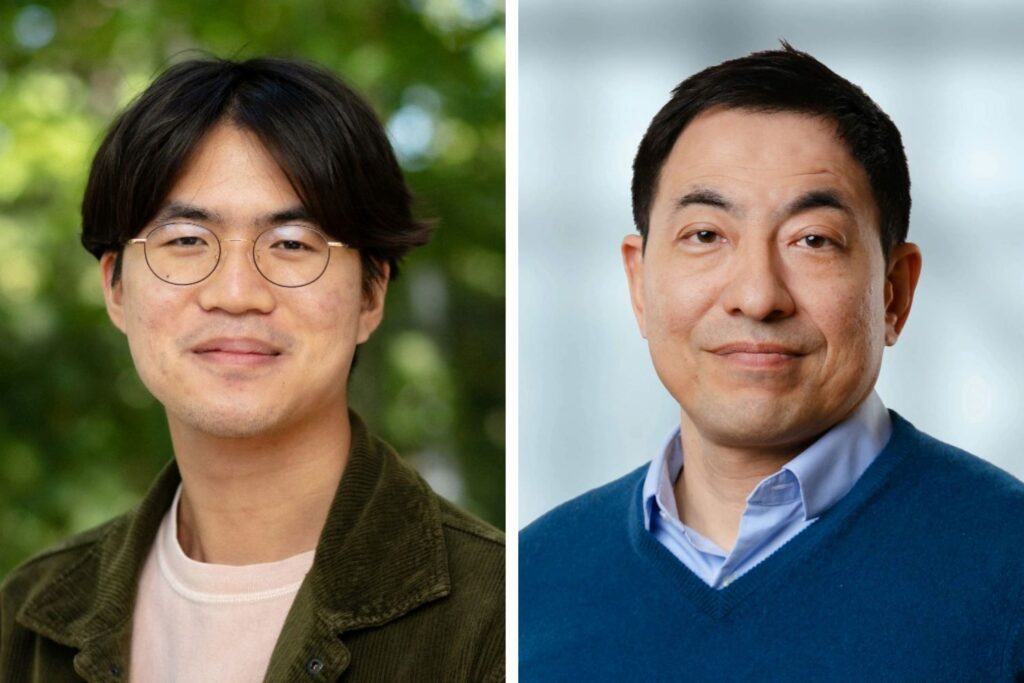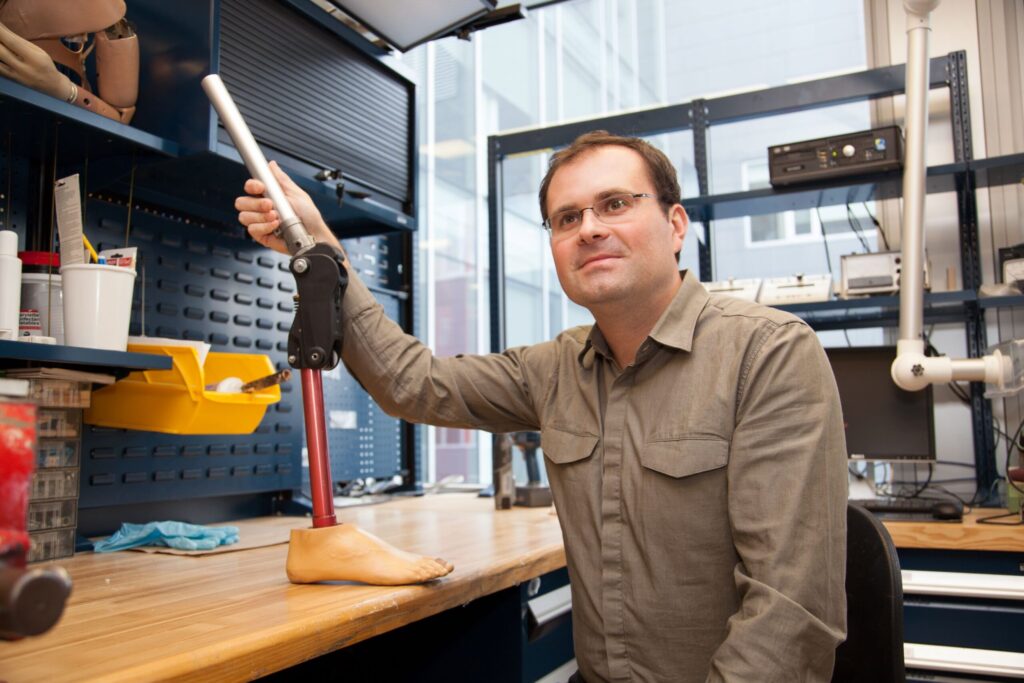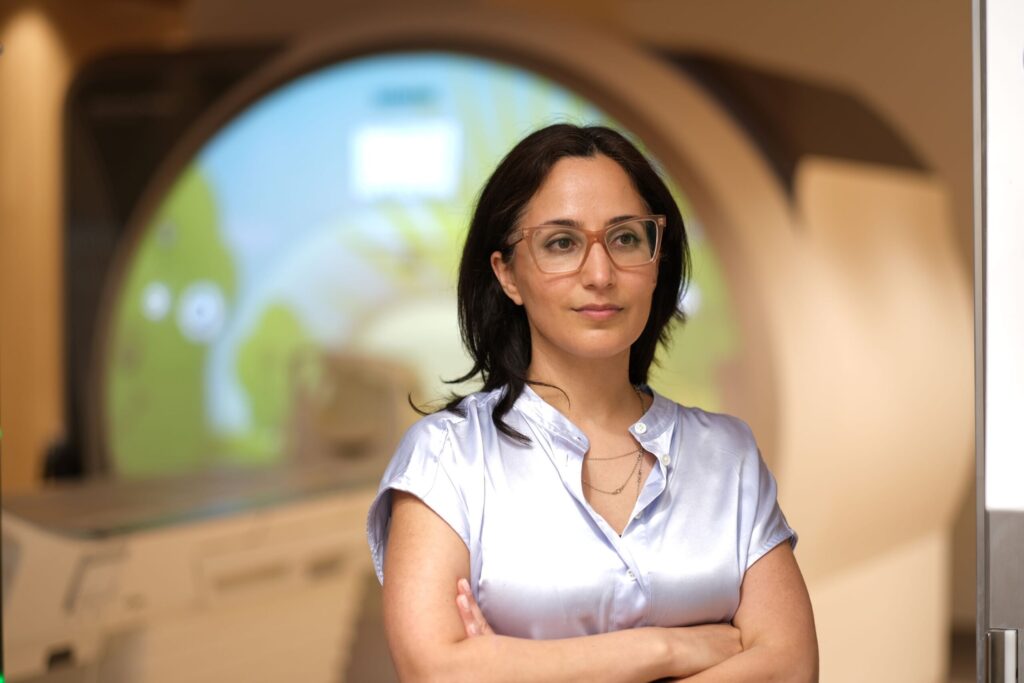Clinical Engineering
BME’s clinical engineers design technologies, devices and strategies for people with chronic disease, traumatic injury, disabilities and mobility limitations to help them integrate more fully with their environment.
Check out the case studies below to learn about the exciting research done here at BME:
Neural Rehabilitation
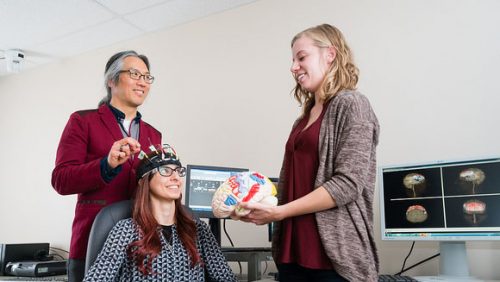
Accessing the right to communication for children and youth with complex disabilities
Professor Tom Chau helps young people with complex disabilities connect with the world around them.
As a senior scientist and vice-president of research at Holland Bloorview Kids Rehabilitation Hospital, Chau leads the Paediatric Rehabilitation Intelligent Systems Multidisciplinary (PRISM) Lab to develop sensing, signal processing and machine-learning methods that enable children and youth with various disabilities to communicate and interact with their environment.
One of his recent foci is to use a non-invasive technique known as near-infrared spectroscopy — to decode brain patterns in young people with severe neurological disability. The signals can then be articulated through various access technologies to enable communication between the patient and their caregivers.
Prosthetics

Enabling mobility for those with physical disabilities
A typical artificial limb costs several thousands of dollars. Professor Jan Andrysek’s All-Terrain Knee (AT-Knee), developed at Holland Bloorview Kids Rehabilitation Hospital, is high-functioning, durable, and costs a fraction of that price.
As a clinical engineer and scientist at Holland Bloorview Kids Rehabilitation Hospital, Andrysek leads the Paediatrics, Rehabilitation, Orthotics, Prosthetics, Engineering and Locomotion (PROPEL) Lab. Its study of human biomechanics allows them to develop and innovate affordable treatments and assistive technologies that enable mobility for individuals with severe physical disabilities.
Today, his spinoff company, LegWorks, is producing the AT-Knee to help amputees around the world regain their mobility and independence.
Interactive Technology
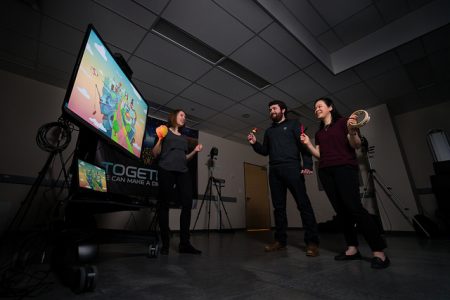
Video games: a new therapeutic frontier
As a clinical engineer and scientist at Holland Bloorview Kids Rehabilitation Hospital, Professor Elaine Biddiss leads the Possibility Engineering and Research Lab (PEARL) to develop interactive technologies that assist young people with disabilities to accomplish rehabilitation goals.
One area of PEARL’s research focus is virtual reality therapy — an interactive, low-cost series of video games that impose virtual constraints to encourage therapeutic movements and can be customized to an individual’s rehabilitation needs. This particular innovation, along with several other developments from her lab, engages children with disabilities and mobility challenges to complete repetitive therapy tasks and foster social interactions through multiplayer options.
Read more news about clinical engineering
Computational model unveils dynamics of Deep Brain Stimulation
Deep Brain Stimulation (DBS) has been a longstanding adjunctive therapy for movement disorders like Parkinson’s disease, yet its precise mechanisms of action have remained elusive. In a recent study published in the journal Neuromodulation, Dr. Milad Lankarany and his team have introduced a computational model that accurately predicts the dynamics of neuronal activity during DBS across various frequencies.
New research aimed to improve early childhood music education
Researchers from the University of Toronto have unveiled a new technological breakthrough that promises to transform early childhood music education. The study addresses a critical gap in musical instrument classification, particularly concerning non-pitched percussion instruments. The findings are published in a recent issue of PLOS one.
Enhancing Balance Rehabilitation
Researchers from UHN’s KITE Research Institute have investigated a new affordable and clinically accessible training system for improving the standing balance of spinal cord injury patients. The team led by Dr. Kei Masani, KITE Senior Scientist and senior author of the study, investigated the integration of low-cost and portable sensors like a depth camera and pressure mat, which use motion tracking and distribution of pressure, respectively, to analyze movement.
Research utilizes machine learning to improve gait analysis in rehabilitation
The latest research led by Prof. Jan Andrysek published in a peer-reviewed article showcases a pioneering approach to gait analysis, a crucial aspect of rehabilitation and clinical diagnosis. Clinicians have long relied on gait indicators like step length, stride velocity, and joint angles to assess and treat gait issues. However, traditional statistical methods have limitations in analyzing the vast sets of data generated by instrumented gait analysis techniques.
BME Professor secures CIHR funding to improve autism medication selection
Dr. Azadeh Kushki (BME) has been awarded funding from the Canadian Institutes of Health Research (CIHR) for her work in improving medication selection for autistic children. Along with Dr. Danielle Baribeau, Dr. Melanie Penner, and Marlee Vandewouw at the Holland Bloorview Kids Rehabilitation Hospital, this funding provides operational support to perform research.

